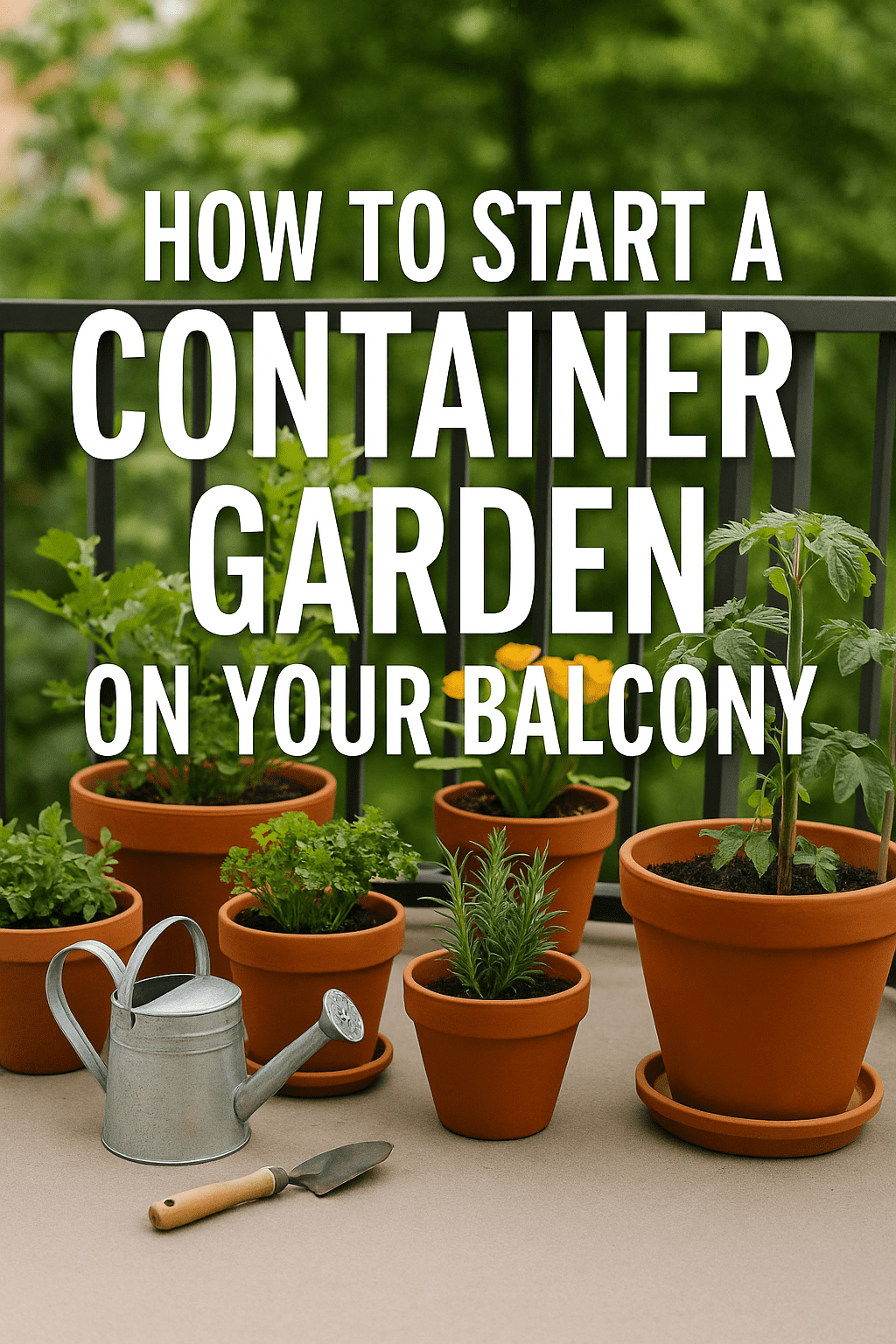
No backyard? No problem! A container garden on your balcony is the perfect way to grow fresh herbs, vegetables, and flowers in small spaces. With just a few pots, some sunlight, and the right approach, even beginners can create a lush, productive garden on a balcony or terrace.
Why Start a Container Garden on Your Balcony?
Container gardening is ideal for renters, urban dwellers, and anyone with limited outdoor space. It’s low-maintenance, flexible, and easy to start. Plus, you’ll enjoy benefits like:
- Fresh herbs and veggies just steps away
- Reduced grocery costs
- Better air quality and relaxation
- Control over soil, sunlight, and pests
Step-by-Step: How to Start a Balcony Container Garden
1. Assess Sunlight and Space
Observe how much sunlight your balcony receives each day. Most vegetables and herbs need at least 4–6 hours of direct sunlight. South-facing balconies are ideal, but you can still grow shade-tolerant plants on north-facing ones.
Tip: Use mirrors or reflective surfaces to increase light for shaded areas.
2. Choose the Right Containers
Pick containers that are the right size for your plants and fit your space. Drainage is essential, so make sure each pot has holes at the bottom. Popular container options include:
- Terracotta or clay pots (breathable, but dry quickly)
- Plastic pots (lightweight and retain moisture)
- Fabric grow bags (great for root veggies and flexible spaces)
- Hanging baskets and railing planters
3. Use Quality Soil and Compost
Skip garden soil — it’s too dense for containers. Use organic potting mix enriched with compost. A good mix drains well but retains enough moisture for roots to thrive.
Optional: Add perlite or coconut coir to improve aeration and water retention.
4. Pick Beginner-Friendly Plants
Start with easy-to-grow plants that thrive in containers. Here are top choices for beginners:
- Herbs: Basil, parsley, chives, mint, thyme
- Leafy greens: Lettuce, spinach, arugula
- Tomatoes: Choose compact or cherry varieties
- Peppers: Sweet or hot peppers do well in pots
- Radishes & carrots: Use deep containers
- Strawberries: Perfect for hanging baskets
5. Water and Feed Consistently
Container plants dry out faster than those in the ground. Water daily in summer and check moisture levels often. Use organic liquid fertilizer or compost tea every 2–3 weeks to support healthy growth.
Tip: Place a tray under pots to catch water and prevent mess on balcony floors.
Maximize Your Balcony Space
- Vertical Gardening: Use wall planters, trellises, or stacked shelves
- Hanging Planters: Great for herbs, strawberries, and trailing plants
- Window boxes: Ideal for shallow-rooted veggies like lettuce
- Use corners: Group large containers to create microclimates
Common Balcony Gardening Mistakes to Avoid
- Overwatering or poor drainage — leads to root rot
- Not checking sunlight needs for each plant
- Using garden soil instead of potting mix
- Ignoring weight limits on balconies (check with landlord or building code)
FAQ: Container Gardening on a Balcony
Can I grow vegetables on a shaded balcony?
Yes! Grow shade-tolerant crops like lettuce, spinach, chard, mint, and parsley. Avoid fruiting plants that need lots of sun, like tomatoes or peppers.
How deep do containers need to be?
Most herbs and greens need 6–8 inches of soil. Root vegetables like carrots need at least 12 inches. Tomatoes and peppers prefer 12–18 inches.
Final Thoughts
You don’t need a big yard to enjoy gardening. A balcony container garden gives you the power to grow fresh food, reduce waste, and connect with nature — right from your home. Start small, experiment with your space, and enjoy your personal green oasis!
Ready to take it further? Learn how to Grow Herbs Indoors All Year and keep your space green no matter the season.



